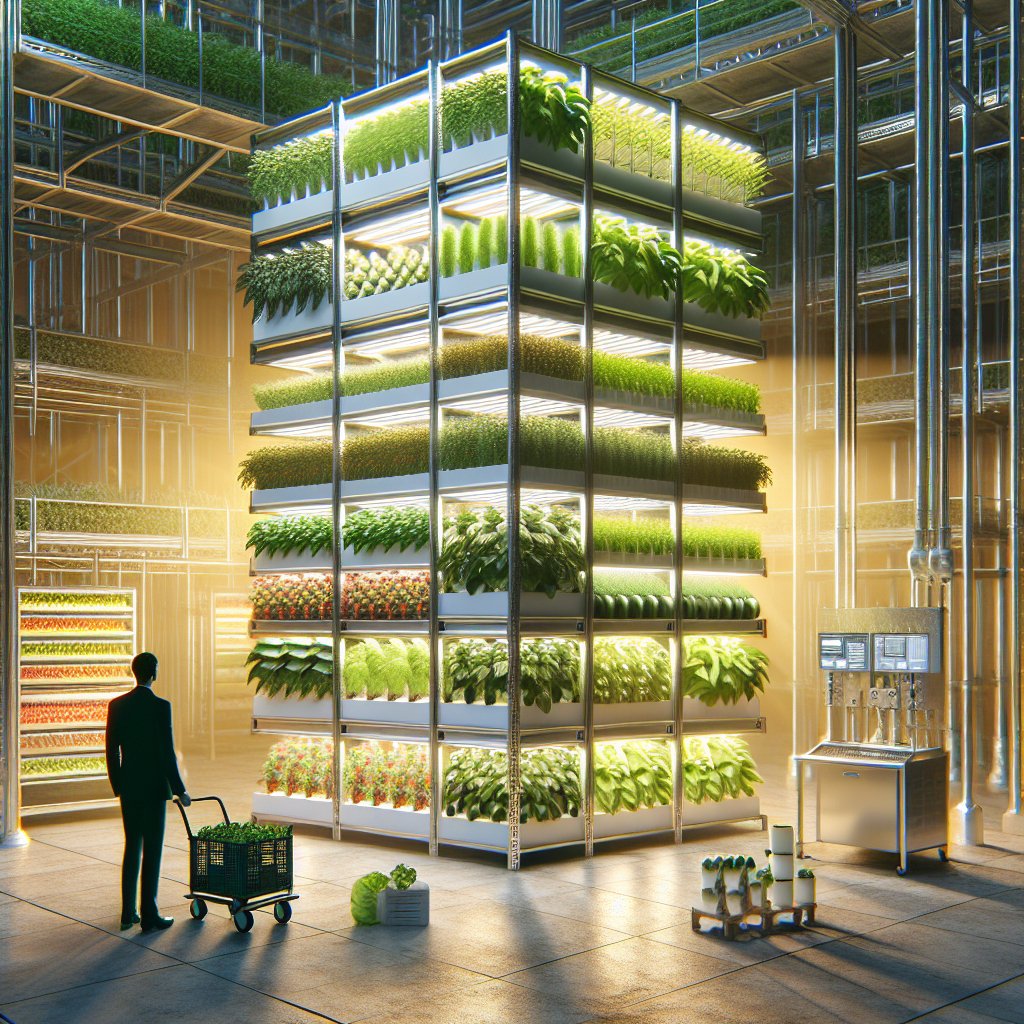Biodiversity in farming systems is a crucial component that contributes to the sustainability and resilience of agricultural landscapes. By integrating a variety of plant and animal species into farming practices, farmers can enhance ecosystem services, improve crop yields, and promote environmental health. This article explores the multifaceted benefits of biodiversity in agriculture, highlighting its role in pest control, soil health, and climate resilience.
The Role of Biodiversity in Pest Control
One of the most significant advantages of biodiversity in farming systems is its ability to naturally manage pest populations. Diverse ecosystems tend to have a balanced food web, where natural predators keep pest species in check. This reduces the need for chemical pesticides, which can have harmful effects on the environment and human health.
For instance, incorporating flowering plants into crop fields can attract beneficial insects such as ladybugs and lacewings, which prey on aphids and other pests. Similarly, maintaining hedgerows and field margins can provide habitats for birds and bats that consume large quantities of insects. By fostering a diverse range of species, farmers can create a self-regulating system that minimizes pest outbreaks and reduces reliance on synthetic inputs.
Moreover, biodiversity can help prevent the development of pest resistance. When a single crop is grown extensively, pests can quickly adapt and become resistant to control measures. However, by rotating crops and intercropping with different species, farmers can disrupt pest life cycles and reduce the likelihood of resistance. This approach not only protects crops but also preserves the effectiveness of natural pest control methods.
Enhancing Soil Health Through Biodiversity
Soil health is fundamental to productive farming, and biodiversity plays a vital role in maintaining and improving soil quality. Diverse plant species contribute to a rich and varied root system, which enhances soil structure and promotes the infiltration and retention of water. This is particularly important in areas prone to drought or heavy rainfall, as healthy soils can mitigate the impacts of extreme weather events.
Additionally, different plants contribute various organic materials to the soil, supporting a wide range of soil organisms. These organisms, including bacteria, fungi, and earthworms, are essential for nutrient cycling and decomposition processes. By fostering a diverse soil community, farmers can enhance nutrient availability and improve soil fertility, leading to healthier crops and higher yields.
Cover cropping is a practice that exemplifies the benefits of biodiversity for soil health. By planting a mix of cover crops during the off-season, farmers can protect the soil from erosion, suppress weeds, and add organic matter. This not only improves soil structure but also increases the soil’s capacity to store carbon, contributing to climate change mitigation efforts.
Climate Resilience and Biodiversity
As climate change poses increasing challenges to agriculture, biodiversity offers a valuable tool for building resilience. Diverse farming systems are better equipped to withstand environmental stresses, such as temperature fluctuations, droughts, and floods. This is because a variety of species can provide different functions and responses to changing conditions.
For example, polycultures, which involve growing multiple crop species together, can buffer against climate variability. If one crop fails due to adverse weather, others may still thrive, ensuring a stable food supply. Similarly, agroforestry systems, which integrate trees with crops or livestock, can provide shade, reduce wind speed, and improve microclimates, protecting crops from extreme weather.
Biodiversity also enhances the genetic diversity of crops, which is crucial for adapting to new challenges. By preserving traditional and heirloom varieties, farmers can access a broader genetic pool that may contain traits for drought tolerance, disease resistance, or other desirable characteristics. This genetic diversity is a vital resource for breeding programs and future food security.
Economic and Social Benefits of Biodiversity
Beyond environmental advantages, biodiversity in farming systems can also offer economic and social benefits. Diversified farms often have multiple income streams, reducing financial risk and increasing resilience to market fluctuations. For instance, farmers can sell a variety of products, such as fruits, vegetables, grains, and livestock, catering to different consumer preferences and market demands.
Moreover, biodiversity can enhance the aesthetic and recreational value of agricultural landscapes, attracting tourists and supporting rural economies. Agritourism activities, such as farm tours, pick-your-own produce, and educational workshops, can provide additional income and promote community engagement with sustainable farming practices.
Socially, biodiversity can strengthen community ties and cultural heritage. Traditional farming practices that incorporate diverse species often reflect local knowledge and customs, fostering a sense of identity and pride. By preserving and promoting these practices, communities can maintain their cultural heritage while contributing to global biodiversity conservation efforts.
Challenges and Opportunities for Biodiversity in Agriculture
Despite the numerous benefits, integrating biodiversity into farming systems presents challenges. Farmers may face economic pressures to maximize short-term yields, leading to the adoption of monocultures and intensive practices. Additionally, a lack of knowledge or resources can hinder the implementation of biodiversity-friendly practices.
However, there are opportunities to overcome these challenges. Policy support, such as subsidies for sustainable practices or payments for ecosystem services, can incentivize farmers to adopt biodiversity-enhancing measures. Research and extension services can provide the necessary knowledge and tools to implement these practices effectively.
Furthermore, consumer demand for sustainably produced food is growing, creating market opportunities for farmers who prioritize biodiversity. By educating consumers about the benefits of biodiversity and promoting certification schemes, such as organic or agroecological labels, farmers can access premium markets and improve their profitability.
In conclusion, biodiversity in farming systems offers a multitude of benefits that extend beyond environmental health. By embracing diverse species and practices, farmers can enhance pest control, soil health, and climate resilience, while also reaping economic and social rewards. As the global community seeks sustainable solutions to food security and environmental challenges, biodiversity in agriculture stands out as a promising and essential strategy.



